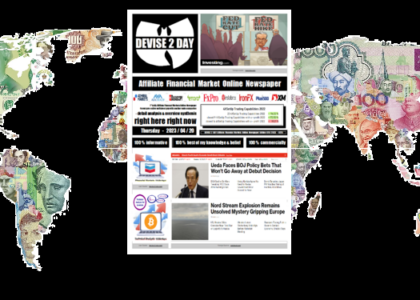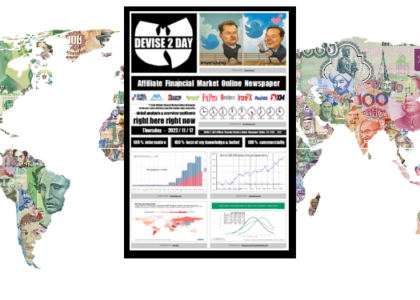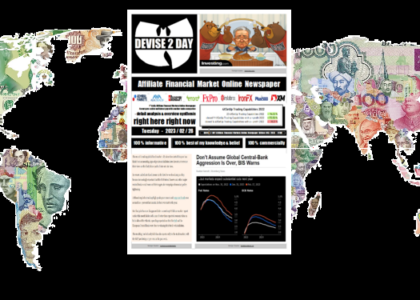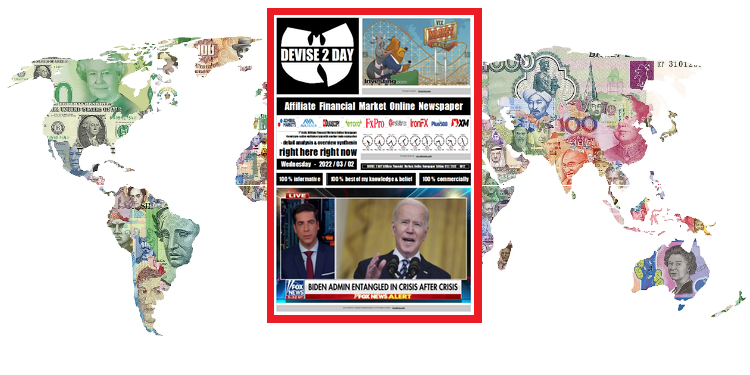
2022/03/02 (012) Technical Analysis – NDX
Danger of war: Russian fighter jets over Sweden!
NASDAQ 100 raises up 1.7 percent while todays tradng session,
which gives the impression that stock markets seems to breathing out…
In an interest rate environment where we financial market participants can assume that the US Central Bank, the FED (Federal Reserve Bank) will (finally) tighten cheap money, in the long term, again, it will be relatively difficult for the NASDAQ. Because not all technology giants show above-average growth and or are so-called value companies. That`s why a more expensive US yield curve is a real alternative for large investors. Which could put pressure on the overall technology market – especially the NSADAQ 100! And that’s exactly what this trading capability is all about.
We find ourselves in a bear market after a lower prices of at least 20% – according to the classic definition. Lower prices of more than 10% means a correction.The US stock markets which have recently been under strong pressure made up very good ground on Wednesday. However, the basic situation on the markets is still characterized by the uncertainty surrounding the war in Ukraine. The news that Russia and Ukraine had signaled their willingness to continue negotiations on Thursday provided a positive impetus. The Dow Jones Industrial closed up 1.79 percent at 33,891 points. The S&P 500 gained 1.86 percent to 4,387 points. The Nasdaq 100 rose 1.70 percent to 14,244 points.
Negotiators from Russia and Ukraine want to meet for talks on a ceasefire for the second time since the war began. However, Russian attacks on Ukrainian cities continued on the seventh day of the war. The European Union and the US tightened sanctions against Russia and also imposed restrictions on Russian ally Belarus. Meanwhile, four Russian warplanes have apparently violated airspace over Sweden. The brief incident happened today east of the Baltic Sea island of Gotland over the sea, the Swedish armed forces said in the evening. Fighter jets from the Swedish Air Force documented the incident in which two Russian SU-27 and two SU-24 jets were involved. In view of the current situation, the incident is taken very seriously. “This is unprofessional and irresponsible action on the part of the Russian side,” said Air Force Chief Carl-Johan Edstrom.
Sweden and neighboring Finland are both non-NATO members, but close partners of the military alliance. Against the background of the significantly deteriorated security situation in the course of the Ukraine war, the two countries held a joint military exercise in the Baltic Sea on Wednesday. According to Swedish information, fighter jets and warships were involved. Meanwhile, US Federal Reserve Chairman Jerome Powell described the effects of the Ukraine war on the economy as very uncertain at a hearing before a US parliamentary committee. However, he still considered a rate hike at the forthcoming Fed interest rate meeting to be appropriate.
10-Year US Bond Yields bounces off two-month lows
The benchmark 10-year Treasury note yield was around 1.86%, rebounding sharply from a two-month low of 1.68% hit early in the week. Market moves came after Fed Chair Jerome Powell told US lawmakers the US economy no longer needs such an accommodative policy stance, signalling a 25 basis point rate hike in March. Aside from Powell’s remarks, investors continued to follow developments around the Russia-Ukraine war.
FED signals march rate hike
Fed Chair Jerome Powell made clear during Congressional testimony on Wednesday that a rapidly healing US economy no longer needs such an accommodative monetary policy and that the central bank would begin raising interest rates in its March 15-16 meeting to restrain surging inflation. Powell said he is inclined to support a 25 basis point increase but noted that the Fed could move more aggressively if inflation does not abate as expected. However, it provided little additional guidance about how fast the Fed would do so. Powell also pointed out that the outbreak of war in Ukraine brought a significant degree of uncertainty for monetary policy.
DXY hits almost 2-Year High
The dollar index broke above the 97.80 level for the first time since June 2020 after Fed Chair Jerome Powell told US lawmakers that a rapidly healing economy no longer needs such an accommodativemonetary policy and that the central bank is prepared to hike interest rates this month. Powell said he is inclined to support a 25 basis point increase but noted that the Fed could move more aggressively if inflation does not abate as expected. Still, he pointed out that the outbreak of war in Ukraine brought a significant degree of uncertainty for monetary policy.
Daily swing chart trend is still down
The main trend is down according to the daily swing chart. However, momentum has been trending higher since February 24. A trade through 13025.75 will signal a resumption of the downtrend. A move through 14668.50 will change the main trend to up. The minor trend is up. This is controlling the momentum. A trade through 13683.00 will change the minor trend to down. The main range is 12263.50 to 16768.00. The index is currently trading inside its retracement zone at 13984.25 to 14515.75. Inside this zone is short-term retracement zone at 14143.00 to 14406.50. On the downside, additional support is a pivot at 13676.75.
Have we seen the worst yet?
Is it time to close our short trading capability?
Even if today’s situation is dramatic, political stock markets have had short legs in the past. Let’s look back at the last geopolitical crisis that threatened to seriously destabilize the international political and economic order: the Kuwait War. The example is not far-fetched because it was also about energy security back then. When the Iraqi army occupied Kuwait in early August 1990, the markets went into hiding. By the beginning of October, the stock markets had lost a maximum of 32 percent, as in the case of (heavily oil-hungry) Japan. The DAX lost almost 30 percent in the weeks after the invasion, and the MSCI World dropped by a good 22 percent. The S&P 500 lost just over eleven percent, and the FTSE 100 even limited the losses to well under ten percent. Most markets had already recouped the losses in October 1993, that is, after a good three years. (All return information in the respective national currency). The annexation of Crimea is not suitable as a blueprint here, since the sanctions were limited and the consequences for global markets were correspondingly small. (The damage to the Russian economy from lost growth was significant, of course, but negligible given Russia’s minor importance to investors.)What’s next? Of course nobody knows!
If, contrary to expectations, Russia stops firing in the next few days and seriously negotiates a peace deal with Ukraine, then the stock markets are likely to aim to new highs – and even reach them before financial market participants look at the economic figures in the USA, and or Europe, and realize that the damage caused by high inflation due to overly expansive fiscal policy is much more serious. Without wanting to count on human losses in Ukraine…
good morning, good day, and/or good night
at whatever time, wherever you are !
right here right now :

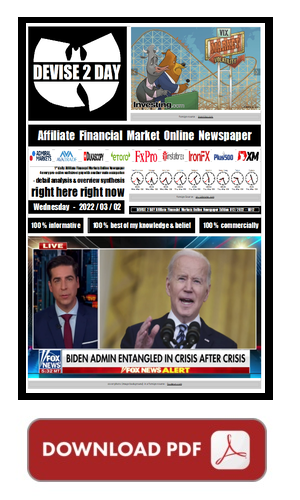





About the Author
Marko Horvat
I do not only ensure that you will easily receive all of our DEVISE 2 DAY information provided via the Internet. No - much more also that all what we provide to you can be read with any what about in words, numbers and/or images by anyone interested with the help of the wonder of the internet. If you have any questions, please contact me immediately.








